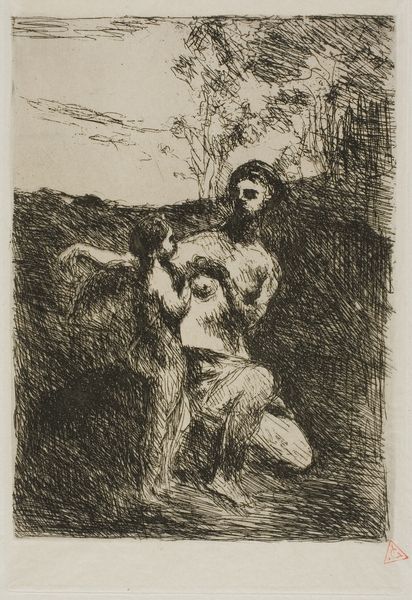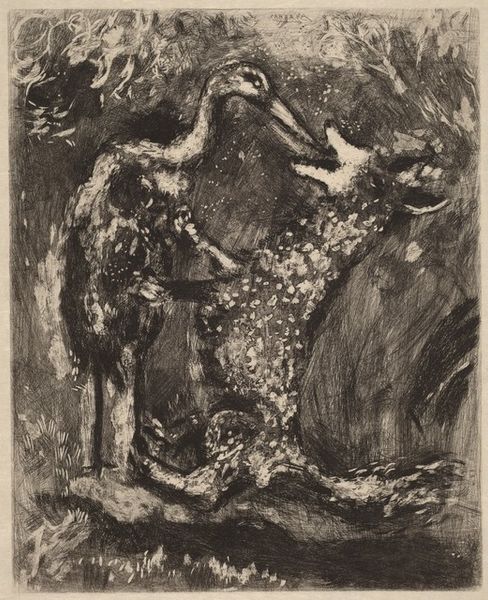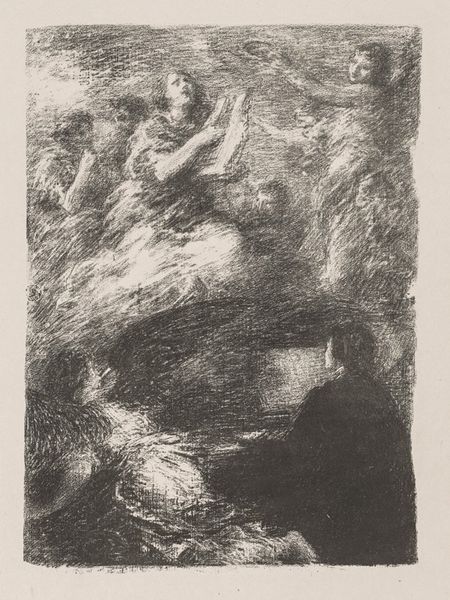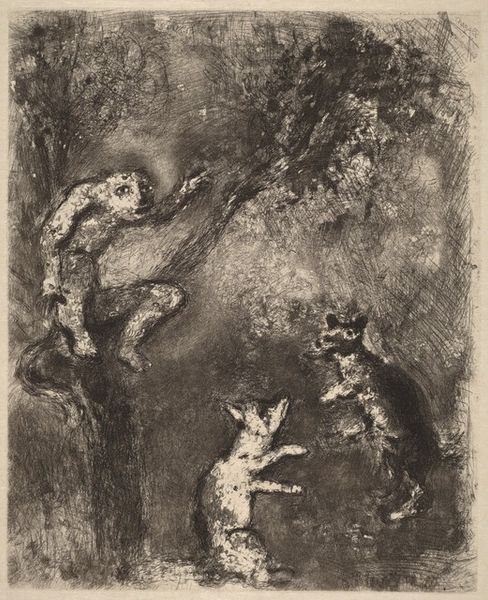
print, etching
#
narrative-art
# print
#
etching
#
landscape
#
figuration
#
expressionism
Copyright: National Gallery of Art: CC0 1.0
Curator: Wow, what strikes me first is just raw, visceral energy, that figure is thrashing, almost vibrating off the page. The whole thing has this electric feel. Editor: Indeed, "The Madman Who Sold Wisdom", an etching by Marc Chagall from between 1927 and 1930, possesses a remarkable intensity. It’s part of a larger series of illustrations Chagall created for Nikolai Gogol's novel "Dead Souls". And what’s compelling here, isn’t simply the energy you picked up on, but how it visualizes Gogol's biting social commentary. Curator: Oh, Gogol! That adds a layer. Knowing it's an illustration… I see that rural landscape hovering in the background, almost like a fading dream behind the figure's tormented actions. Are we meant to question who exactly is mad in this situation? Is it him, or the system around him? Editor: Exactly! That’s precisely where Chagall shines. He uses his Expressionist style, combined with those narrative elements, to explore the grotesque realities of Tsarist Russia through Gogol's satire. The "madman" isn't necessarily insane, he might just be the only one lucid enough to see the absurdity of the world and desperate to change the things around him. Curator: The textures created by the etching technique also adds to that. It’s scratchy, agitated—it almost feels like a visual scream. The bare feet are gripping the earth…is this supposed wisdom the key for getting grounded to reality? Editor: One could see it that way. And look at how Chagall manipulates light and shadow; he casts that wild-eyed figure in darkness while in contrast the background reveals domestic structures as witnesses, homes, and individuals on a bucolic scenery—suggesting societal dysfunction. By bringing them into stark focus with that level of expressionism, Chagall encourages viewers to confront the uncomfortable truths of Russian society. Curator: Thinking about it, this reminds me of a memory, about my father telling me once that the sanest people were thought mad, because society isn't ready for what they see, I can’t help to see a bit of myself, of my reality and background. I love how much it can represent at the same time Editor: And isn’t that a key part of experiencing art—finding those points of connection that help us question the world around us and the ways that has been framed? That raw emotive feeling it has can easily transpose itself and become someone else's perspective, and their personal background is essential for interpreting. Curator: Precisely! Thanks to that energy, it's a call to empathy.
Comments
No comments
Be the first to comment and join the conversation on the ultimate creative platform.













